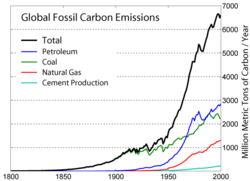Disrupting the Automobile explores how several ventures are changing the rules of an intractable industry.

The automobile is a personal manifestation of the ultimate promise of the Industrial Economy—that physical power is essentially free—because it enables people to move quickly and easily. People just love cars because it is immensely satisfying to glide effortlessly (traffic notwithstanding ,^) from one place to another with a high degree of individual freedom.
However, as 2007 draws to a close, autos’ current reliance on fossil fuels makes it increasingly obvious that we need to change the rules. First, new wealth in emerging markets is dramatically increasing auto ownership and its concomitant demand for oil. Increased demand and uncertain supply will undoubtedly prove unsustainable in the medium term. Second, and even more daunting, is the carbon/climate change problem, which is far more life-changing in the long term. Petroleum and coal are the largest contributors to man-made carbon emissions.
Since every challenge also means opportunity, entrepreneurs are busy with an increasing sense of urgency, trying to solve the problem. Here are two examples that I found particularly interesting:
 Decoupling Power from the Automobile—Project Better Place, the provisional name for a venture that seeks to build “battery stations” for cars, would make electric cars more viable in two ways: 1) the cost of the car would be far less because the battery would not have to be included (it is a large expense of electric cars) and 2) the electric car would have an unlimited range because the driver would just swap out the battery at the battery service station (analogous to filling up the tank now), thereby avoiding the “wait and charge” pattern in place now. This is a perfect example of innovation because it rejects the prevailing assumption that the car and battery are one. It realizes that no one needs a battery; people need battery power. For more, see Project Better Place or Software Executive Shifts Gears to Electric Cars (WSJ, 29 October 2007). I see this as a short-term solution, since it reconfigures and delivers existing technology.
Decoupling Power from the Automobile—Project Better Place, the provisional name for a venture that seeks to build “battery stations” for cars, would make electric cars more viable in two ways: 1) the cost of the car would be far less because the battery would not have to be included (it is a large expense of electric cars) and 2) the electric car would have an unlimited range because the driver would just swap out the battery at the battery service station (analogous to filling up the tank now), thereby avoiding the “wait and charge” pattern in place now. This is a perfect example of innovation because it rejects the prevailing assumption that the car and battery are one. It realizes that no one needs a battery; people need battery power. For more, see Project Better Place or Software Executive Shifts Gears to Electric Cars (WSJ, 29 October 2007). I see this as a short-term solution, since it reconfigures and delivers existing technology.- Crowdsourcing the next car—A longer term solution than Project Better Place is designing super (relative to today) efficient cars, which is what the Automotive X PRIZE proposes (there’s even a race involved!). It offers a $10 million prize to the team that designs a car that meets three main criteria: 1) efficiency, must average at least 100 miles per gallon; 2) emissions, car must emit a maximum of 200 g greenhouse gases per mile and 3) economic viability, the team must have a realistic plan to mass produce at least 10,000 safe, comfortable cars at a reasonable cost. The X PRIZE Foundation circumvents the locked-in automotive industry by crowdsourcing the car’s design to people without entrenched interests. For more, see Automotive X PRIZE or The Race to Build the 100-MPG Car (Wired cover, January 2008).

Leave a Reply
You must be logged in to post a comment.